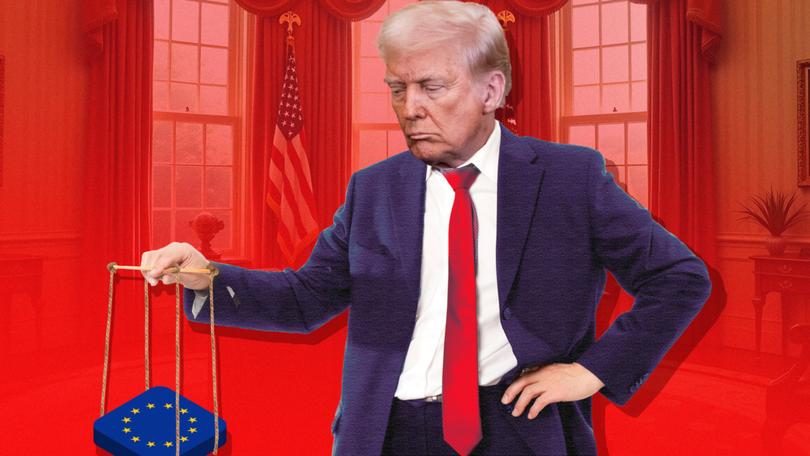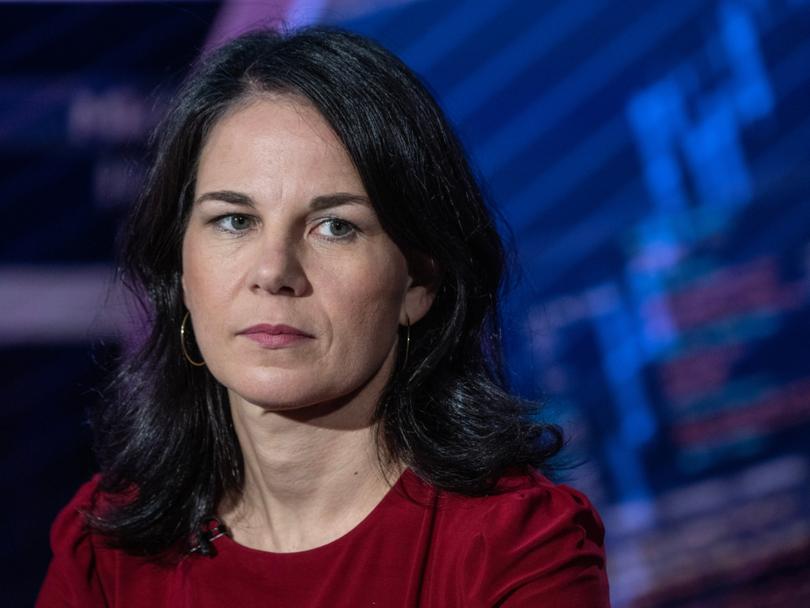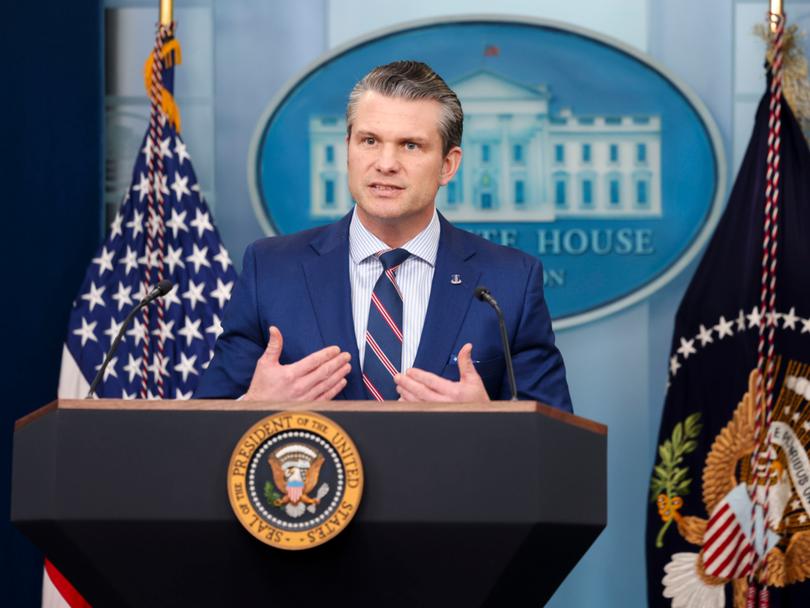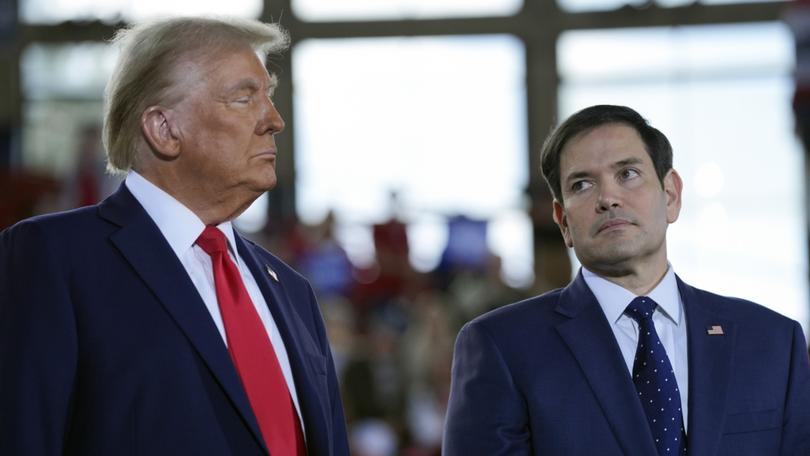Latika M Bourke: Donald Trump playing puppet master with an increasingly angry Europe

As is his skill, Donald Trump hijacked the agenda in Europe without leaving the Oval Office.
When he announced on Wednesday that he had phoned Vladimir Putin and that the Russian leader, during the course of their 90 minute phone call had agreed to meet to discuss ending the war in Ukraine, the outcry in Europe went into overdrive and verged on hysteria.
The European Union’s chief diplomat, former Estonian Prime Minister Kaja Kallas said the US was giving Russia “everything that they want even before the negotiations”.
Sign up to The Nightly's newsletters.
Get the first look at the digital newspaper, curated daily stories and breaking headlines delivered to your inbox.
By continuing you agree to our Terms and Privacy Policy.“It is appeasement,” she said.
The European Commission has confirmed that it was not consulted before Trump made his call to Moscow.
Germany’s foreign minister Annalena Baerbock said of the call: “This is not how others do foreign policy, but this is now the reality.”

John Bolton, who fell out with Trump after serving as one of his national security advisers, accused Trump of surrendering to Putin, this cry was echoed by many in Europe who also accused the US of going over Ukraine and Europe’s head to cut a deal with Putin.
Trump, who met Ukraine’s President Volodomyr Zelensky twice last year, was heavily criticised for calling Russia first.
Europe harbours deep suspicions that Trump has a personal liking for Putin and will sell out Ukraine.
These fears intensified when Pete Hegseth, the Defence Secretary, delivered two and a half minutes of truth-bombs to fellow Defence Ministers at NATO headquarters in Brussels attending the Ukraine Defense Contact Group just hours before Trump’s bombshell.
He told them that the US wanted the war to end and that Ukraine would be forced to give up on some of its victory goals, including reclaiming Crimea, which Putin annexed in 2014.
“Returning to Ukraine’s pre-2014 borders is an unrealistic objective,” he said.
“Chasing this illusionary goal will only prolong the war and cause more suffering.”
He then went on to say that Europe would be responsible for keeping the peace, that there would be no US boots on the ground in Ukraine and that any future peacekeeping would not be covered by NATO’s Article 5 collective defence treaty.
He said that the US expected a “division of labour” and for Europe to no longer depend on America for its security.
“The US is prioritising deterring war with China in the Pacific, recognising the reality of scarcity, and making the resourcing tradeoffs to ensure deterrence does not fail,” he said.
In short, the US has no longer got Europe’s back.
Hegseth’s other point — that the US wanted the peace to be durable and not be a repeat of the Minsk agreements which failed to stop Putin’s full-scale invasion of Ukraine — was largely overlooked in the shellshocked, then angry reaction.
In the German city of Munich, it all set a dark mood on the eve of the annual Security Conference which begins on Friday.
It is likely to be one of the most consequential Munich Security Conferences in decades with the world order changing materially and fast.
Leaders will give speeches but all eyes will be on the meetings Ukraine’s President Volodymyr Zelenesky holds with Trump Administration figures Secretary of State Marco Rubio and Special Envoy for Ukraine Keith Kellogg — who Trump notably did not include on his list of officials given the task of negotiating a ceasefire.
Vice President JD Vance will also attend.
Already analysts are drawing parallels between Trump’s “surrender” to the failed pre-war Munich Agreement struck with the Nazis.
But Europe could do with a little less hysteria and a bit more public acceptance of some of the truths Hegseth dished out, however caustically they were delivered.
Indeed, in response to the outcry, Hegseth was forced to soften his tone 24 hours later, insisting that the Trump Administration wanted to make NATO “Great Again” but that Europe would not be turning “Uncle Sam into Uncle Sucker”.
He even tried to walk back his insistence that Ukraine would not be joining NATO.
“I want to be clear about something as it pertains to NATO membership not being a realistic outcome for negotiations,” he said when asked an unrelated question about NATO.
“That’s something that was stated as part of my remarks here as part of a coordination with how we’re executing these ongoing negotiations, which are led by President Trump.
“All of that said, these negotiations are led by President Trump. Everything is on the table in his conversations with Vladimir Putin and Zelensky.”
Nice try.

Hegseth’s training wheels were on show with this attempted backflip.
But his initial comments remain the truth.
And the unhappy reality for Europe is that the Trump Administration shares key positions that the Biden Administration held but would not say out loud, preferring instead to hide behind the now flimsy “with Ukraine for as long as it takes” rhetoric.
Hegseth is telling them bluntly but if Europeans are shocked by the content as well as the tone, then they have failed to grasp what has been long obvious.
That Ukraine would have to cede territory, possibly as part of a buffer zone or frozen frontline, has been discussed privately for more than a year now and even Zelensky has long-dropped from his public demands that victory means pre-2014 borders.
As for no NATO membership, this too can hardly be a shock.
Kevin Roberts from the Heritage Foundation, which drew up the Project 2025 agenda, much of which is being adopted by Trump in office, said over dinner in London last year that NATO was “off the table, from our vantage point”.
When pressed on why, he said: “Because it is one of the reasons the war started.”
This is a bipartisan view in the United States, although the reasons behind it differ.
Biden was also against Ukraine joining NATO telling Time magazine last year that he did not want to see the “Natoisation” of Ukraine because the country was too corrupt.
Under Biden, Ukraine was given enough weapons to bleed but never win.
Europe too, did not choose to arm Ukraine with the weapons it needed to win and dithered over sending tanks, fighter jets and using the proceeds of Russian assets.
Biden’s caution was driven by fears of Russian escalation that would draw the US into a continental war — he too was avoiding US boots on the ground at all costs.
It’s impossible to know if a more rapid and lethal response would have changed the war but the facts are that the strategy adopted until now resulted in a stalemate.
And this is what Trump wants to end with the war approaching three years.
Europe is right to worry that Trump does not have its or Ukraine’s best interests at heart.
The US President clearly admires dictators and unlike Biden holds no personal affection for Ukraine.
But this is just the beginning. There are plenty of hands to be dealt and played at the negotiating table.
Because ultimately, it’s not just Putin who has to agree to any peace, and there is no indication he is genuine about giving up his aims for subjugating Ukraine, but Kyiv and Europe also have to sign up.
And this is the hard reality that faces the Trump Administration — bullying might have its limits.

It’s perfectly fine to attack Europe over its defence spending, but then what?
Once the shock of brutal barbs delivered by friends have receded, what’s the long-term strategy for jointly deterring the threats that remain in both Europe and the Indo-Pacific?
Europe has been lifting its game on defence spending and has more to do, not even Europe disagrees with that.
But for it to deliver the troops and funds to rebuild and guarantee Ukraine’s security it must be involved in whatever deal is struck.
Trump has had success in obedience from world leaders so far, but he is unlikely to be able to command a continental response at the same time he has made it clear to those leaders he’s withdrawing from the region.
And it is obvious that a durable outcome in Ukraine is in the United States’ interests too.
Hegseth’s idea of “dividing labour” sounds nice but the last few years have shown us that the security threats have never been more indivisible.
The presence of North Korean troops on the Russian frontline is a key example.
Europe has only itself to blame that it finds itself being battered by a hostile US Administration and too feeble to protect Ukraine from a US-imposed negotiation.
But the Trump Administration must be made to realise that if China is the greater strategic threat, keeping one of the world’s largest markets onside might be an important piece in the United States “Peace through Strength” toolkit too.

